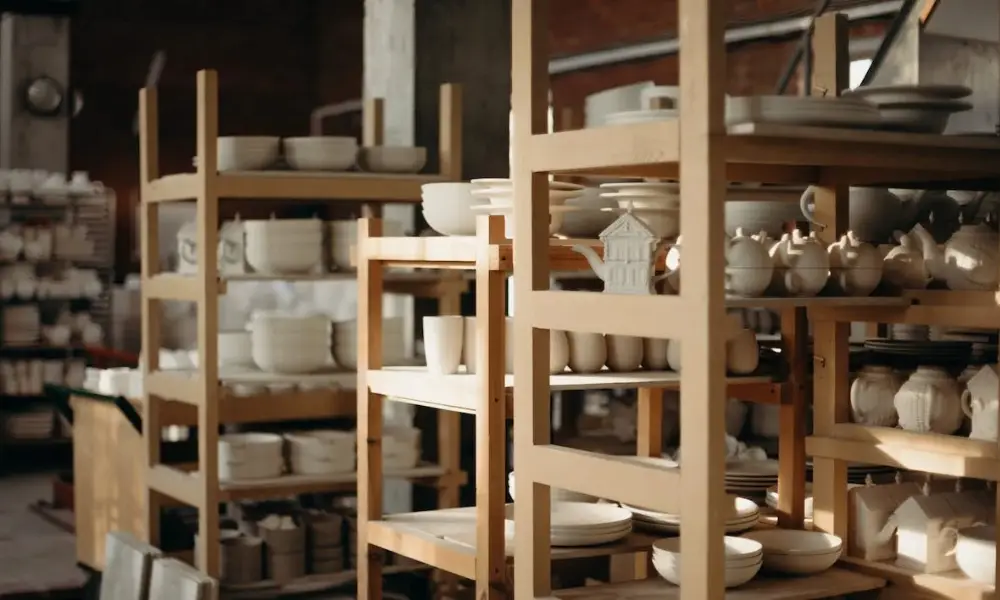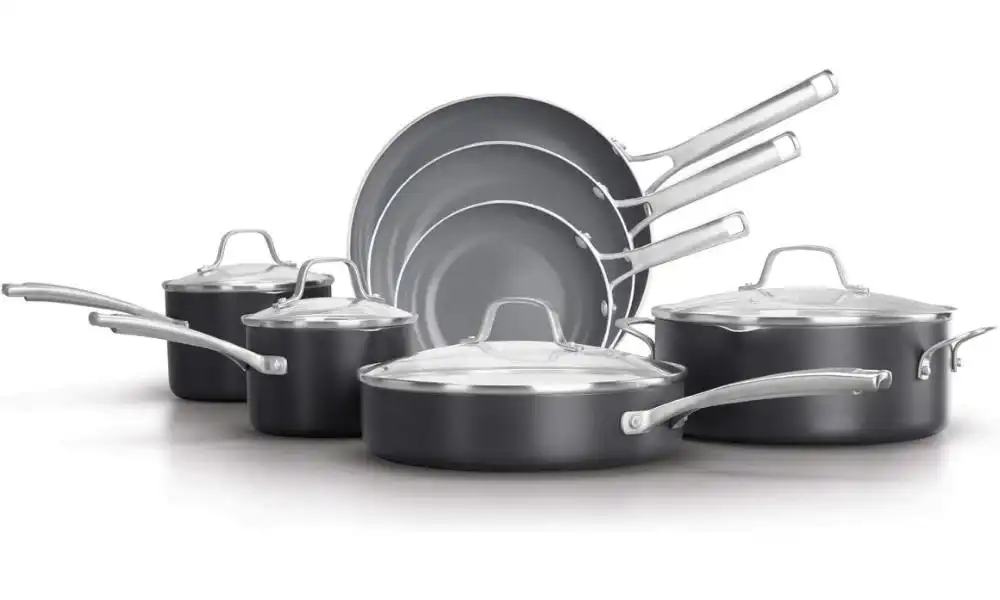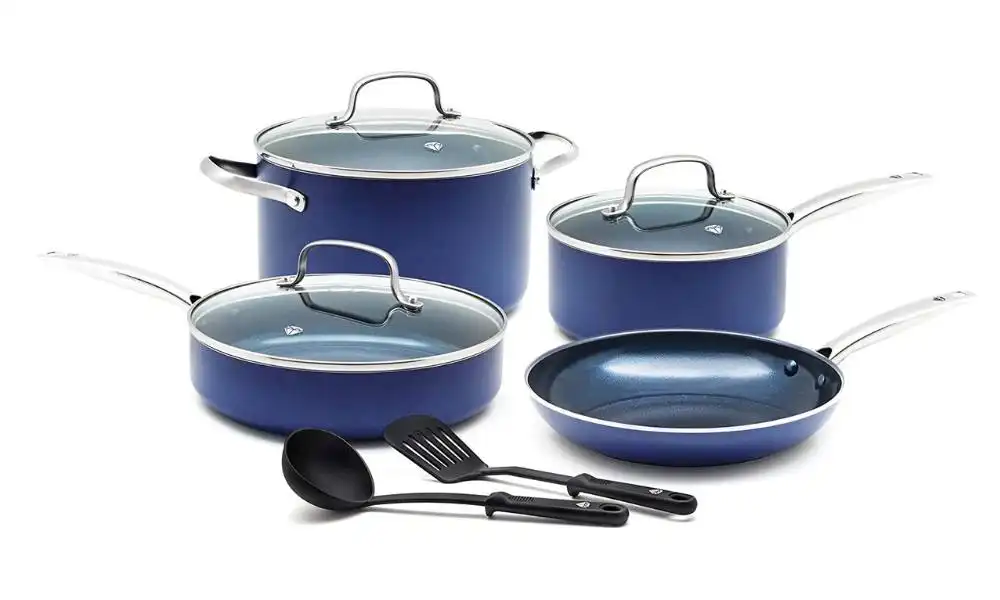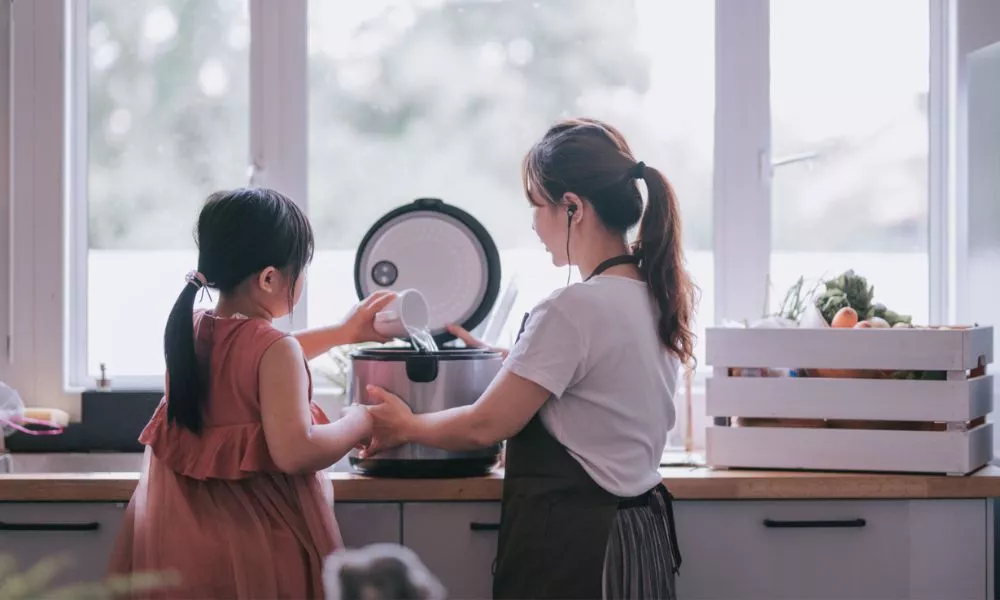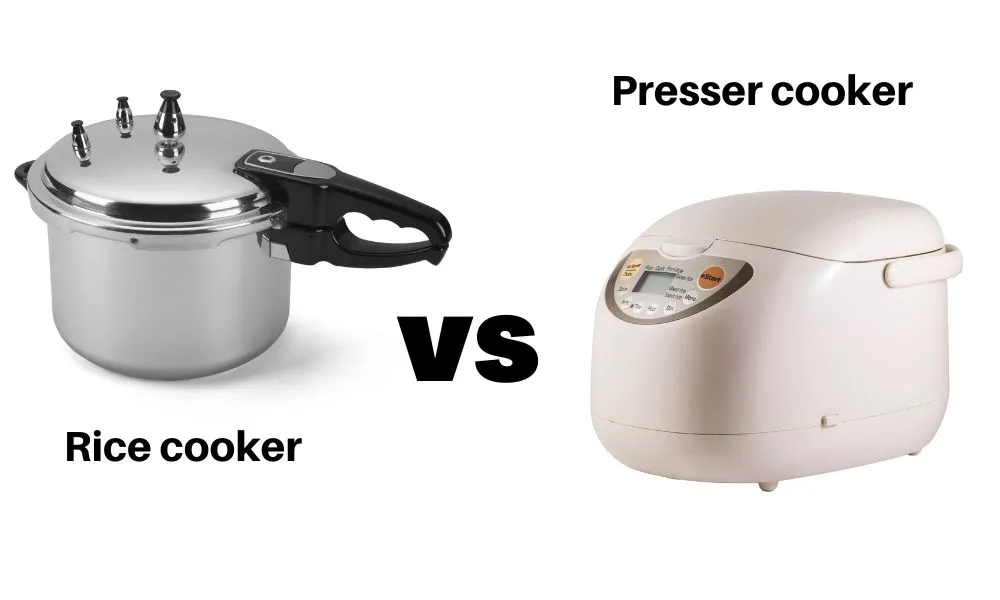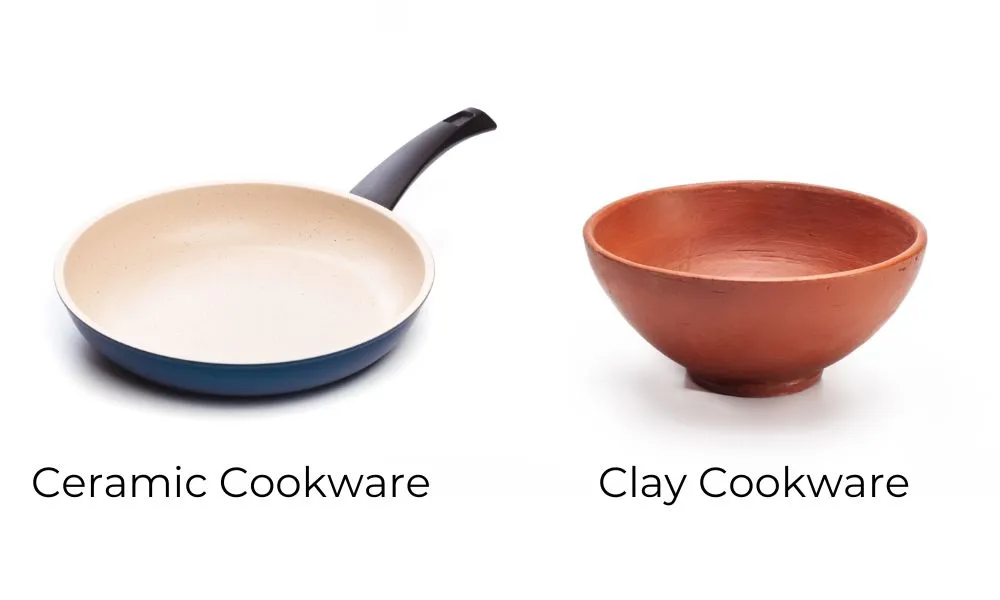Ceramic cookware has gained popularity in recent years as a healthy and versatile option for cooking. This article aims to provide an in-depth understanding of ceramic cookware, including its composition, manufacturing process, advantages, disadvantages, and a comparison with other types of cookware. Whether you’re a seasoned chef or a cooking enthusiast, this comprehensive guide will help you make informed decisions about using ceramic cookware in your kitchen.
Table of Content
- What is Ceramic Cookware?
- History of Ceramic Cookware
- Composition and Manufacturing Process
- Advantages of Ceramic Cookware
- Disadvantages of Ceramic Cookware
- Ceramic Cookware vs. Other Types of Cookware
- Can Ceramic Cookware Take Longer to Heat?
- What is Ceramic Cookware Best For?
- Health Benefits of Ceramic Cookware
- Common Misconceptions about Ceramic Cookware
- How to cook with ceramic cookware?
- Tips for Using and Maintaining Ceramic Cookware
- Utensils for Ceramic Cookware
- Buying Guide for Ceramic Cookware
- 10 Best Affordable Ceramic Cookware Reviews
- Conclusion
- FAQs (Frequently Asked Questions)
What is Ceramic Cookware?
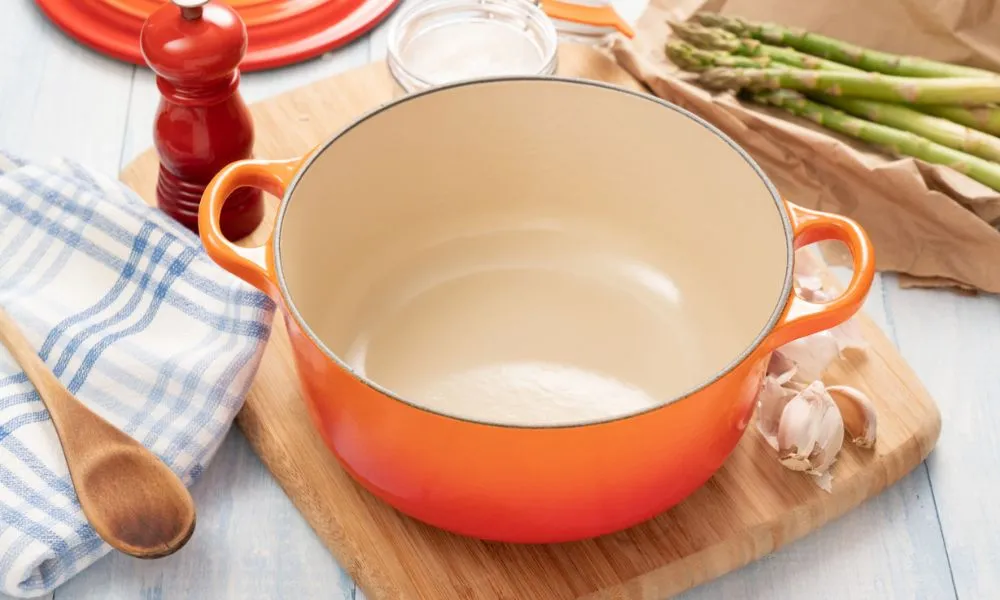
Ceramic cookware is a type of cookware made from clay that is hardened by firing it at high temperatures. The clay used in ceramic cookware is often mixed with other natural materials like minerals and water to create a durable and heat-resistant surface. The resulting cookware is known for its non-stick properties and ability to distribute heat evenly across the cooking surface.
History of Ceramic Cookware
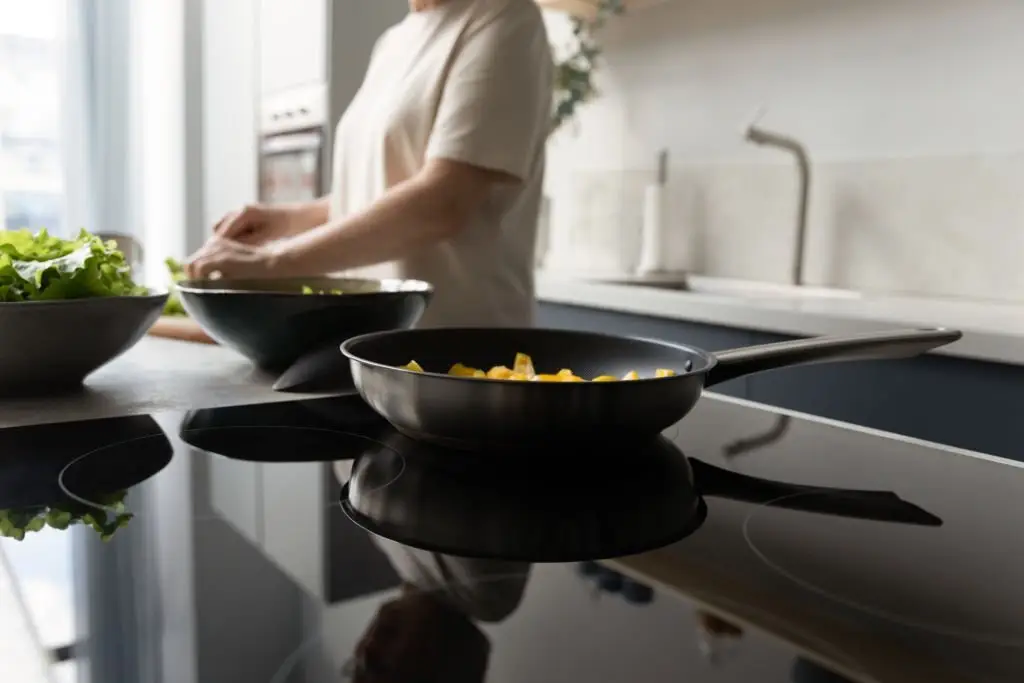
Ceramic cookware has a long history that dates back thousands of years. The use of ceramics for cooking vessels can be traced to ancient civilizations, where clay pots and pans were crafted for culinary purposes. Here is a brief overview of the history of ceramic cookware:
- Ancient Times: The origins of ceramic cookware can be found in ancient civilizations such as the Chinese, Greeks, Romans, and Egyptians. These early cultures discovered the benefits of using clay for cooking vessels due to its heat retention and ability to withstand high temperatures.
- Chinese Influence: Ceramic cookware owes a great deal of its development to the influential contributions of Chinese pottery. The Chinese were pioneers in the art of ceramics, creating intricate and durable pottery. During the Tang Dynasty (618-907 AD), the Chinese introduced glazed ceramics, which added a protective coating to the clay vessels and improved their durability.
- Mediterranean and Middle Eastern Influence: The Greeks and Romans also used ceramics for cooking purposes. In ancient Greece, ceramic pots called “stamnos” were used for boiling liquids and cooking. The Romans further developed ceramic cookware, introducing new shapes and designs such as the “testo,” a flat-bottomed pot used for cooking.
- Evolution in Europe: Throughout the Middle Ages and the Renaissance, ceramic cookware continued to evolve in Europe. The introduction of kilns and advancements in pottery techniques allowed for the production of more refined and specialized cookware. Ceramic pots and pans became common household items for cooking and baking.
- Industrial Revolution: With the advent of the Industrial Revolution in the 18th century, ceramic cookware production shifted from traditional pottery methods to more mechanized processes. The introduction of mass production techniques made ceramic cookware more accessible and affordable to a wider range of people.
- Modern Advances: In recent years, ceramic cookware has seen advancements in terms of materials and coatings. Traditional clay pots have been supplemented by ceramic-coated metal cookware, which combines the heat retention properties of clay with the durability and versatility of metals like aluminum or stainless steel. Ceramic non-stick coatings have also gained popularity as an alternative to traditional non-stick coatings that may contain harmful chemicals.
Today, ceramic cookware remains a popular choice for many home cooks and professional chefs. Its natural non-stick properties, even heat distribution, and aesthetic appeal make it a versatile and attractive option for cooking and serving meals.
Composition and Manufacturing Process
Ceramic cookware is typically made from a combination of clay and other natural materials. The specific composition may vary depending on the manufacturer, but common materials include clay, quartz, feldspar, and other minerals. These ingredients are carefully mixed and shaped into the desired cookware forms, such as pots, pans, and baking dishes.
The manufacturing process involves molding the clay mixture, followed by drying and firing it in a kiln at high temperatures. This firing process strengthens the ceramic material and enhances its heat resistance. Some manufacturers also apply a glaze to the cookware, which not only adds aesthetic appeal but also further improves its non-stick properties.
Advantages of Ceramic Cookware
Ceramic cookware offers several advantages that make it a popular choice among home cooks and professional chefs alike. Here are some key benefits:
- Non-Toxic and Safe: Ceramic cookware is known for being non-toxic and free from harmful chemicals like PFOA and PTFE, which can be found in some non-stick coatings. This makes it a healthier option for cooking, as it doesn’t release any toxic fumes even at high temperatures.
- Even Heat Distribution: Ceramic cookware distributes heat evenly across the cooking surface, preventing hot spots and ensuring that food is cooked uniformly. This particular attribute proves to be highly advantageous when preparing delicate meals that necessitate precise temperature management.
- Versatility in Cooking: Ceramic cookware is compatible with various heat sources, including gas, electric, and induction stovetops. Additionally, it has the versatility to function inside the oven, enabling baking and roasting as well. This versatility makes it a convenient choice for different cooking techniques.
- Easy to Clean: The smooth and non-stick surface of ceramic cookware makes it easy to clean. Food residues can be easily removed with gentle scrubbing, and in most cases, the cookware is dishwasher safe. However, it’s always recommended to check the manufacturer’s instructions for specific cleaning guidelines.
- Aesthetically Pleasing: Ceramic cookware is available in a wide range of colors and designs, adding a touch of style to your kitchen. Whether you prefer vibrant hues or classic neutrals, ceramic cookware offers options to suit every aesthetic preference.
Disadvantages of Ceramic Cookware
While ceramic cookware has many advantages, it also has a few limitations to consider:
- Not Indestructible: Although ceramic cookware is durable, it is not indestructible. Dropping or mishandling the cookware can lead to chipping or cracking. It’s important to handle it with care to maintain its longevity.
- Limited Metal Utensil Use: Ceramic cookware is not as resistant to scratching as some other types of cookware. It is recommended to use wooden or silicone utensils to avoid damaging the ceramic surface.
- Requires Gentle Heating: Rapid changes in temperature can cause ceramic cookware to crack. It is advisable to gradually heat the cookware and avoid exposing it to extreme temperature differences.
Ceramic Cookware vs. Other Types of Cookware
Ceramic cookware stands out from other types of cookware due to its unique features. Let’s explore how ceramic cookware compares to some popular alternatives:
Ceramic Cookware vs. Teflon Cookware
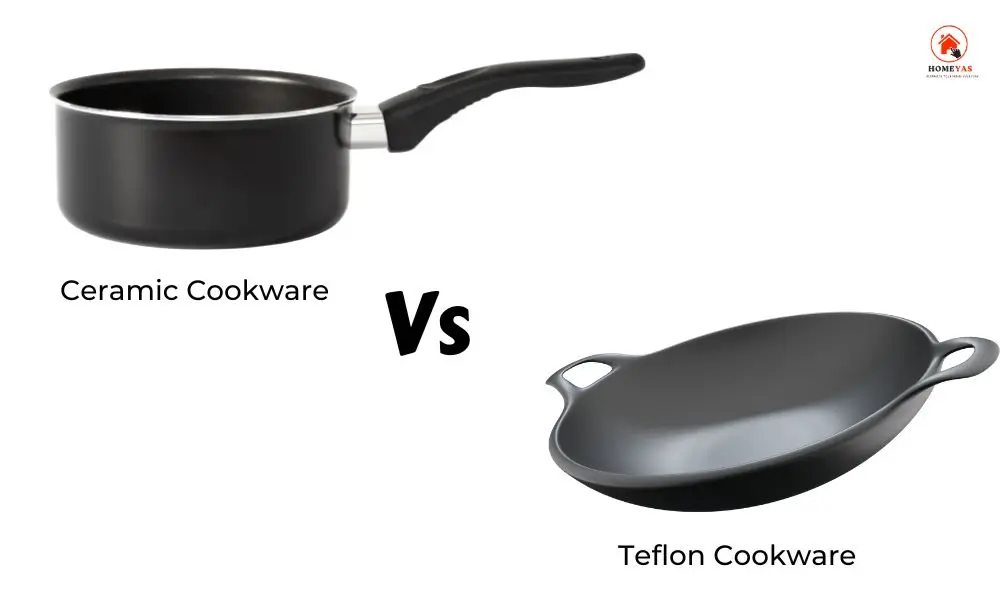
Ceramic cookware is often considered a healthier alternative to Teflon (non-stick) cookware. While Teflon provides excellent non-stick properties, it can release toxic fumes when heated at high temperatures. Ceramic cookware, on the other hand, is non-toxic and doesn’t emit harmful substances during cooking.
Ceramic Cookware vs. Stainless Steel Cookware
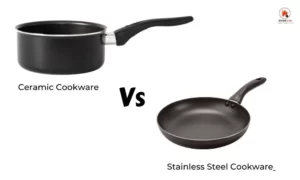

Stainless steel cookware is known for its durability and resistance to scratching. Ceramic cookware, however, offers better non-stick properties and even heat distribution. The choice between the two depends on personal preferences and cooking needs.
Ceramic Cookware vs. Aluminum Cookware
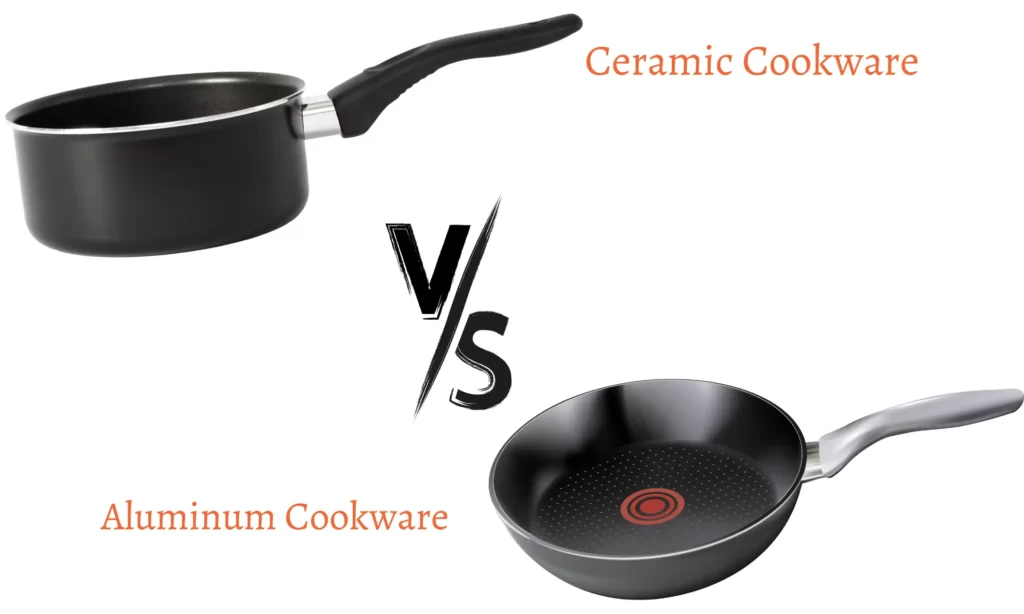
Aluminum cookware possesses the advantageous qualities of being lightweight and having exceptional heat conductivity. However, it can react with acidic or alkaline foods, affecting the taste of the dish. Ceramic cookware provides a non-reactive cooking surface and is a better choice for those concerned about taste and potential health risks associated with aluminum.
Hard Anodized vs. Ceramic Cookware

Hard anodized cookware refers to aluminum cookware that has undergone an electrochemical process to enhance its durability and non-stick properties. While hard anodized cookware is highly scratch-resistant, ceramic cookware offers similar non-stick properties with the added benefit of being non-toxic and easy to clean.
Ceramic Cookware vs. Porcelain Cookware
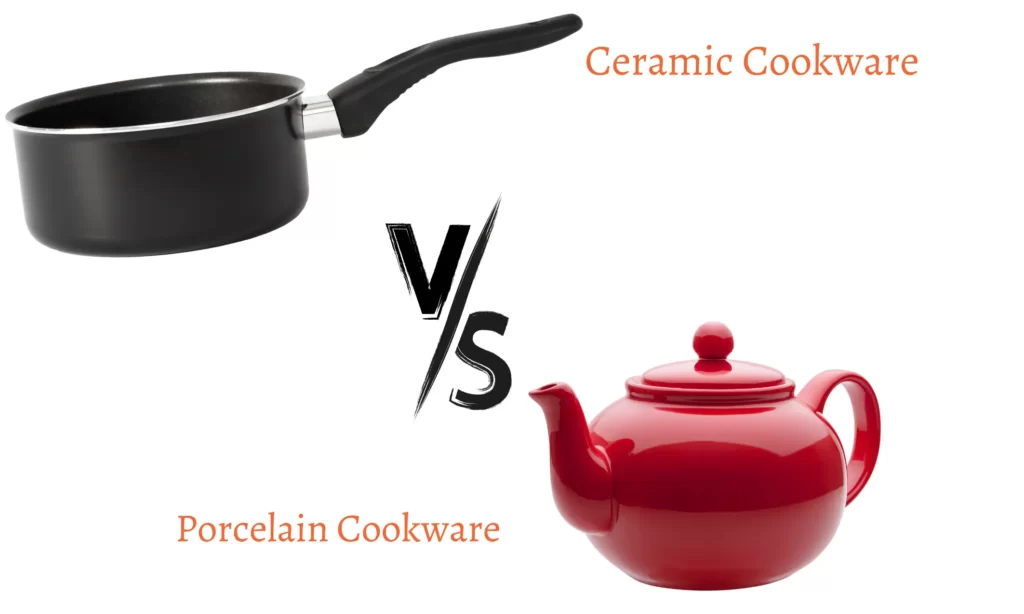
Porcelain cookware is also made from clay but undergoes a different firing process, resulting in a more delicate and elegant finish. While both ceramic and porcelain cookware share similar properties, ceramic cookware tends to be more versatile and suitable for a wider range of cooking applications.
Ceramic Cookware vs. Titanium Cookware
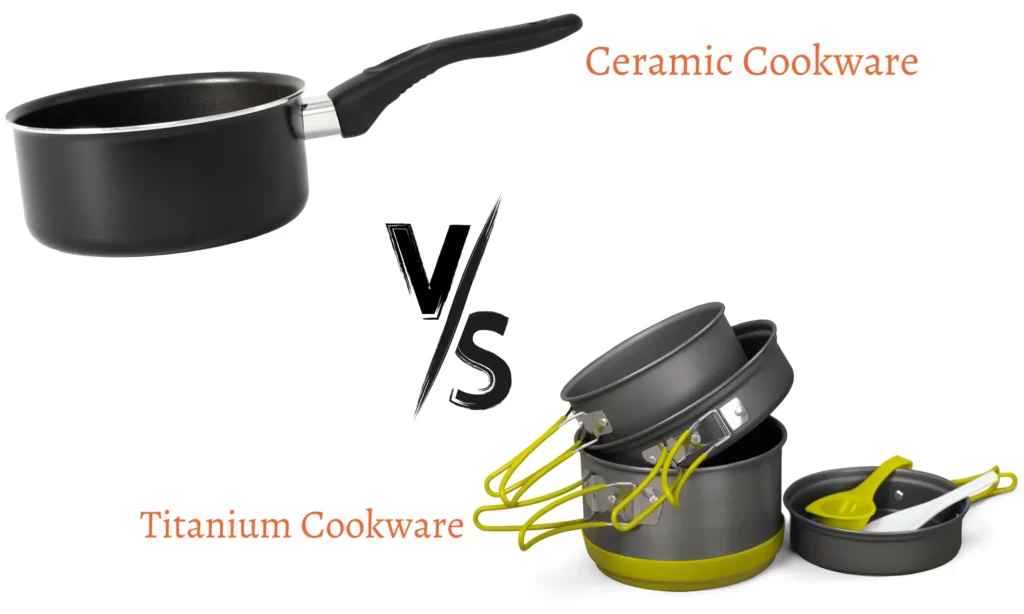
Titanium cookware is renowned for its featherlight design and exceptional ability to conduct heat efficiently. Ceramic cookware, however, offers superior non-stick properties and a wider variety of designs and colors. Both options possess their own advantages, and the decision relies on individual preferences.
Ceramic Cookware vs. Granite Cookware
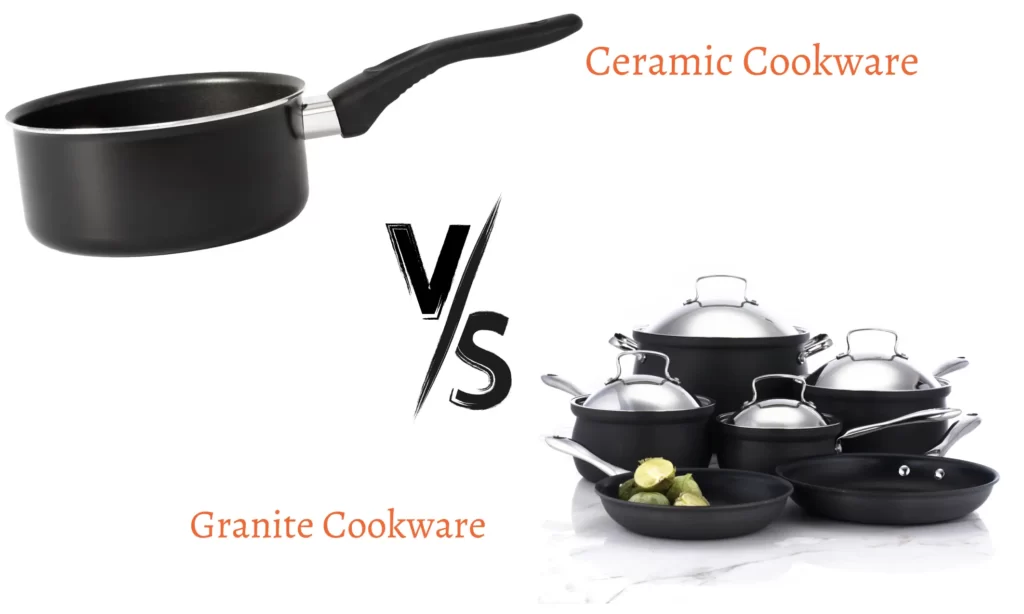
Granite cookware, often made with a non-stick granite coating, provides excellent durability and resistance to scratching. Ceramic cookware offers similar non-stick properties while being non-toxic. Both options are good choices, but ceramic cookware offers a wider range of colors and designs.
Ceramic Cookware vs. Cast Iron Cookware
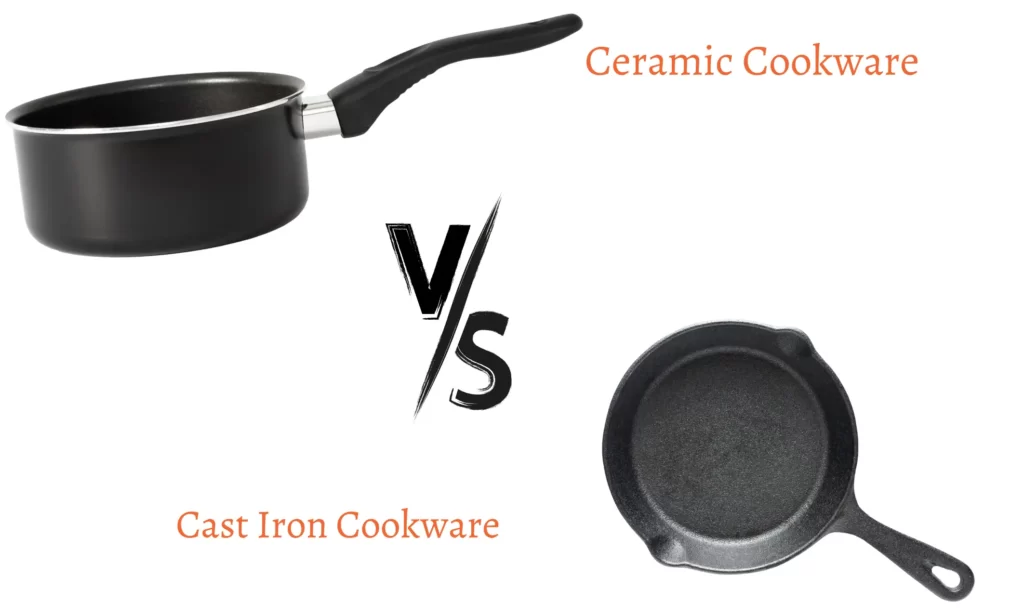
Cast iron cookware is known for its exceptional heat retention and even heat distribution. Ceramic cookware offers similar heat distribution properties while being significantly lighter in weight and easier to maintain. The choice depends on individual preferences and specific cooking needs.
Can Ceramic Cookware Take Longer to Heat?
No, Ceramic Cookware Take Longer to Heat. Ceramic cookware does require a slightly longer preheating time compared to some other cookware materials. The clay-based composition of ceramic cookware takes a bit longer to absorb and distribute heat. However, once heated, ceramic cookware retains heat effectively and provides consistent cooking temperatures throughout the cooking process.
It’s important to note that the heating time may also vary depending on the type and thickness of the ceramic cookware. Thicker ceramic cookware may take longer to heat up but can retain heat better once it reaches the desired temperature.
What is Ceramic Cookware Best For?
Ceramic cookware is best known for its non-stick properties, even heat distribution, and versatility in the kitchen. Here are some common uses and benefits of ceramic cookware:
- Cooking with Less Oil: Ceramic cookware typically has a non-stick surface, allowing you to cook with less oil or butter. This makes it a healthier option for those looking to reduce fat intake in their cooking.
- Sautéing and Stir-Frying: Ceramic pans are great for sautéing vegetables and stir-frying dishes. The even heat distribution helps to cook the ingredients uniformly and prevents hot spots.
- Simmering and Slow Cooking: Ceramic pots are excellent for simmering soups, stews, and slow-cooked meals. The material retains heat well, allowing for a steady and gentle simmer over an extended period.
- Baking and Roasting: Some ceramic cookware, such as ceramic baking dishes, can be used in the oven. They are ideal for baking casseroles, gratins, desserts, and roasting meats or vegetables.
- Versatility and Aesthetics: Ceramic cookware often comes in a variety of colors and designs, adding a touch of style to your kitchen. It can be used for various cooking techniques, including boiling, steaming, braising, and more.
- Easy to Clean: The non-stick surface of ceramic cookware makes it relatively easy to clean. Food residue typically slides off easily, and most ceramic pans are dishwasher-safe. However, it’s always a good idea to refer to the manufacturer’s instructions for specific care recommendations.
- PFOA and PTFE-Free: Ceramic cookware is generally free from harmful chemicals like perfluorooctanoic acid (PFOA) and polytetrafluoroethylene (PTFE), which are commonly found in some non-stick coatings. This makes ceramic cookware a safer option for cooking.
While ceramic cookware offers many advantages, it’s important to note that it can be prone to chipping or scratching if mishandled or used with metal utensils. It’s recommended to use wooden, silicone, or plastic utensils to preserve the integrity of the ceramic surface.
Overall, ceramic cookware is a popular choice for those seeking a non-toxic, non-stick cooking surface that provides even heat distribution and versatility in the kitchen.
Health Benefits of Ceramic Cookware
One of the significant advantages of ceramic cookware is its health benefits. Here are a few reasons why it is a popular choice for health-conscious individuals:
- Non-Toxic Cooking Surface: Ceramic cookware is made from natural materials and does not contain harmful chemicals like PFOA and PTFE. It provides a non-toxic cooking surface that does not release toxins or fumes when heated, ensuring that your food remains safe and healthy.
- Minimal Oil Usage: The non-stick properties of ceramic cookware reduce the need for excessive oil or butter when cooking. This promotes healthier cooking by minimizing added fats and calories in your meals.
- Non-Reactive Surface: Ceramic cookware has a non-reactive surface, meaning it doesn’t interact with acidic or alkaline foods. This prevents the transfer of metallic tastes or unwanted substances, preserving the flavors and integrity of your dishes.
- Easy to Clean: Cleaning ceramic cookware is a breeze, even without the use of harsh chemicals. Its non-adhesive coating ensures that food doesn’t adhere to it, simplifying the process of effortlessly wiping it clean. This eliminates the need for excessive scrubbing, reducing the risk of exposure to potentially harmful cleaning agents.
Common Misconceptions about Ceramic Cookware
While ceramic cookware has gained popularity, there are a few misconceptions that need clarification:
Is Ceramic Cookware Completely Non-Stick?
Ceramic cookware is known for its non-stick properties, but it’s essential to note that no cookware is entirely non-stick. While ceramic coatings provide excellent release properties, certain foods may still stick if cooked at high heat or without sufficient oil or fat.
Can Ceramic Cookware Withstand High Temperatures?
Ceramic cookware is generally safe to use at high temperatures. However, extreme temperature changes can cause thermal shock and potentially lead to cracking or breakage. It is recommended to avoid exposing ceramic cookware to sudden temperature fluctuations.
Is Ceramic Cookware Fragile and Prone to Breakage?
While ceramic cookware is durable, it is not immune to breakage if mishandled. Dropping or subjecting the cookware to significant impact can cause chips, cracks, or breakage. Proper care and gentle handling are necessary to maintain the integrity of the cookware.
How to cook with ceramic cookware?

Cooking with ceramic cookware is similar to cooking with other types of cookware, but there are a few considerations to keep in mind to ensure proper use and care. Here’s a step-by-step guide on how to cook with ceramic cookware:
Preparing the Cookware:
1. Before using your ceramic cookware for the first time, wash it with warm, soapy water and rinse it thoroughly.
2. Make sure the cookware is completely dry before using it.
3. Check the manufacturer’s instructions for any specific seasoning or pre-use recommendations.
Selecting the Recipe
1. Choose a recipe that suits your preferences and dietary needs.
2. Consider the size of your ceramic cookware and ensure it can accommodate the ingredients.
Preparing the Ingredients
1. Gather and prepare all the ingredients as required by the recipe.
2. Cut, chop, and measure the ingredients according to the recipe’s instructions.
Heating the Cookware
1. Place the ceramic cookware on the stove or cooktop.
2. Preheat the cookware over medium heat for a few minutes. This helps distribute the heat evenly.
Adding Cooking Oil or Butter

1. Once the cookware is preheated, add a small amount of cooking oil or butter to the pan.
2. Swirl the oil or butter around to coat the bottom of the cookware evenly.
Cooking the Ingredients
1. Add the prepared ingredients to the ceramic cookware.
2. Follow the recipe instructions for cooking times, temperature settings, and any other specific steps.
Stirring and Tossing
1. Stir or toss the ingredients regularly to ensure even cooking and prevent sticking.
2. Use the appropriate utensils, such as a spatula or tongs, to avoid scratching the ceramic surface.
Adjusting Heat
1. If needed, adjust the heat settings on the stove or cooktop to maintain the desired cooking temperature.
2. Ceramic cookware retains heat well, so you may need to reduce the heat slightly once it reaches the desired temperature.
Monitoring and Testing
1. Keep a close eye on the food while it cooks to prevent overcooking or burning.
2. Use a food thermometer or other appropriate methods to ensure the ingredients are cooked to the recommended internal temperatures.
Serving and Enjoying
1. Once the food is fully cooked, remove the ceramic cookware from the heat source.
2. Use oven mitts or pot holders to handle the hot cookware.
3. Transfer the food to serving dishes or plates and enjoy your meal!
Supply:
- Ceramic cookware (pots, pans, or a set)
- Cooking ingredients
- Cooking oil or butter
- Utensils (spatula, tongs, ladle, etc.)
- Stove or cooktop
Tools:
- a spatula,
- tongs,
- ladle,
- a stove
Materials: The main material you’ll be using is the ceramic cookware itself. Ceramic cookware is made from a combination of clay, minerals, and other natural materials, which are then fired at high temperatures to create a durable and non-stick surface.
Tips for Using and Maintaining Ceramic Cookware
To maximize the performance and lifespan of your ceramic cookware, here are some tips to keep in mind:
Seasoning Your Ceramic Cookware
Some ceramic cookware may benefit from seasoning before use. Seasoning helps enhance the non-stick properties and improve the longevity of the cookware. To season your ceramic cookware:
- Please clean the cooking utensils by washing them with warm water and soap, and make sure to dry them completely.
- Apply a thin layer of cooking oil or spray to the interior surface of the cookware.
- Please preheat the cooking utensils over low to medium heat for a few minutes.
- Remove the cookware from the heat and let it cool completely.
- Wipe off any excess oil with a paper towel.
Proper Cooking Techniques
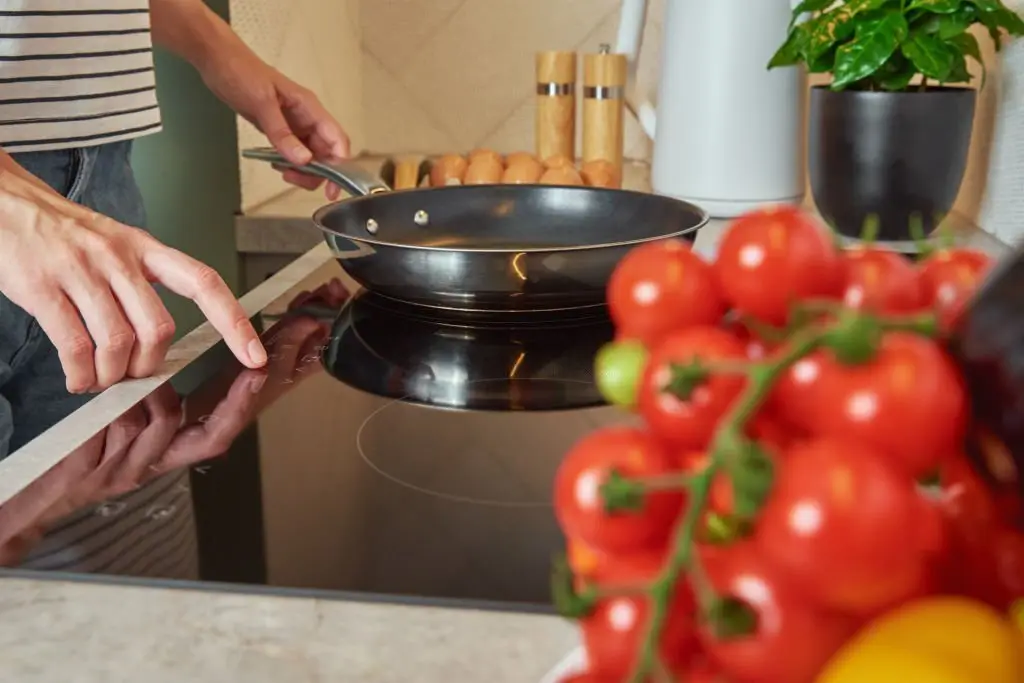
To get the best results when cooking with ceramic cookware, consider the following techniques:
- Preheating: Preheat the cookware on low to medium heat for a few minutes before adding the ingredients. This helps distribute heat evenly and prevents food from sticking.
- Use Moderate Heat: Ceramic cookware retains heat well, so using high heat is usually unnecessary. Cooking on moderate heat is usually sufficient for achieving the desired results.
- Avoid Metal Utensils: To prevent scratching the ceramic surface, use wooden, silicone, or other non-metal utensils when cooking and serving.
- Gradual Temperature Changes: Avoid exposing ceramic cookware to extreme temperature changes. Allow it to cool down gradually after cooking to avoid thermal shock.
Cleaning and Storing Ceramic Cookware
To keep your ceramic cookware in top condition, follow these cleaning and storing tips:
- Handwashing: Although some ceramic cookware is dishwasher safe, handwashing is generally recommended. Use a mild dishwashing detergent, warm water, and a soft sponge or cloth to clean the cookware. Avoid using abrasive cleaners or scouring pads that can scratch the surface.
- Avoid Soaking: While ceramic cookware can withstand brief soaking, it’s best to avoid prolonged immersion in water. Excessive soaking may weaken the ceramic surface or affect the cookware’s performance over time.
- Air Drying: After washing, allow the cookware to air dry completely before storing. This prevents moisture buildup and potential mold or mildew growth.
- Stacking and Storing: If stacking your ceramic cookware, place a soft cloth or paper towel between each piece to prevent scratches. Store in a cool, dry cabinet away from direct sunlight.
Utensils for Ceramic Cookware
Choosing the right utensils for your ceramic cookware is essential to prevent scratches and preserve its non-stick surface. Consider using the following utensils:
- Wooden Utensils: Wooden spoons, spatulas, and tongs are gentle on ceramic surfaces and do not scratch the coating.
- Silicone Utensils: Heat-resistant silicone utensils provide excellent flexibility and won’t scratch or damage ceramic cookware.
- Nylon Utensils: Nylon utensils are another suitable option, as they are non-abrasive and won’t scratch the cookware’s surface.
Avoid using metal utensils, sharp objects, or abrasive materials that can damage the ceramic coating.
Buying Guide for Ceramic Cookware
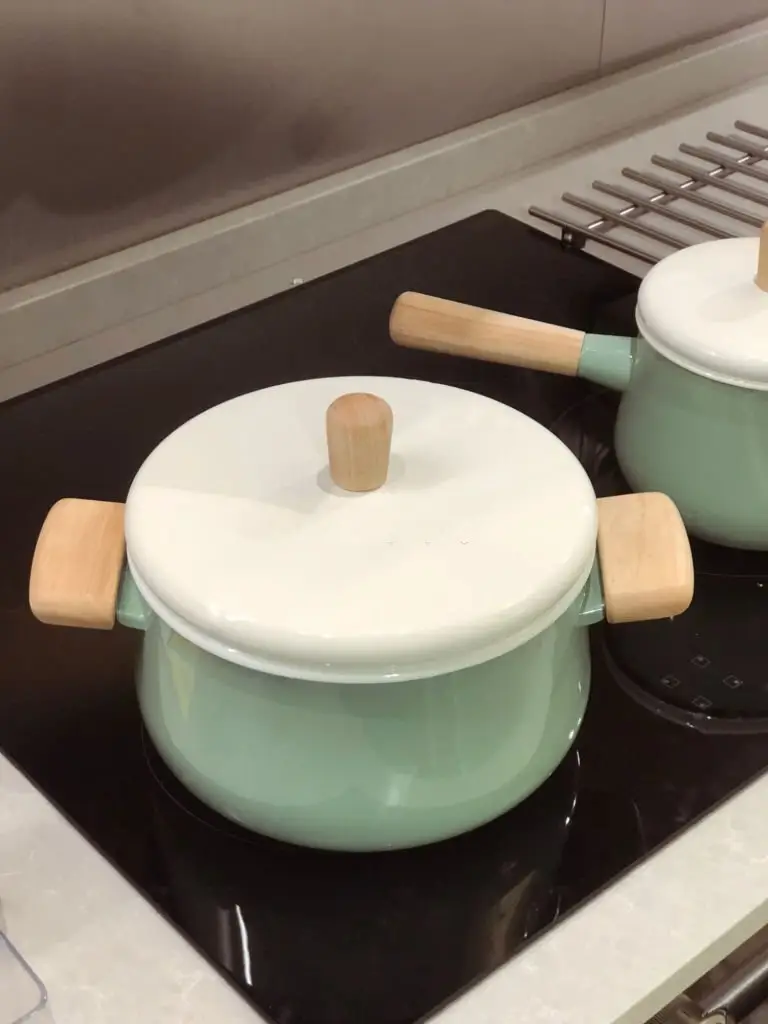
When purchasing ceramic cookware, consider the following factors:
- Quality and Durability: Look for reputable brands that offer high-quality ceramic cookware. Read customer reviews and check for warranty information to ensure the product’s durability.
- Non-Stick Coating: Consider the quality of the non-stick coating. Look for cookware that has a reliable and durable ceramic non-stick surface.
- Heat Compatibility: Check if the cookware is suitable for your specific cooking needs. Ensure it is compatible with the heat sources you plan to use, such as gas, electric, or induction.
- Versatility and Design: Consider the versatility of the cookware and its suitability for various cooking techniques. Additionally, choose a design and color that matches your kitchen aesthetics and personal preferences.
- Price and Value: Set a budget for your ceramic cookware purchase. Compare prices and features to find the best value for your money.
10 Best Affordable Ceramic Cookware Reviews
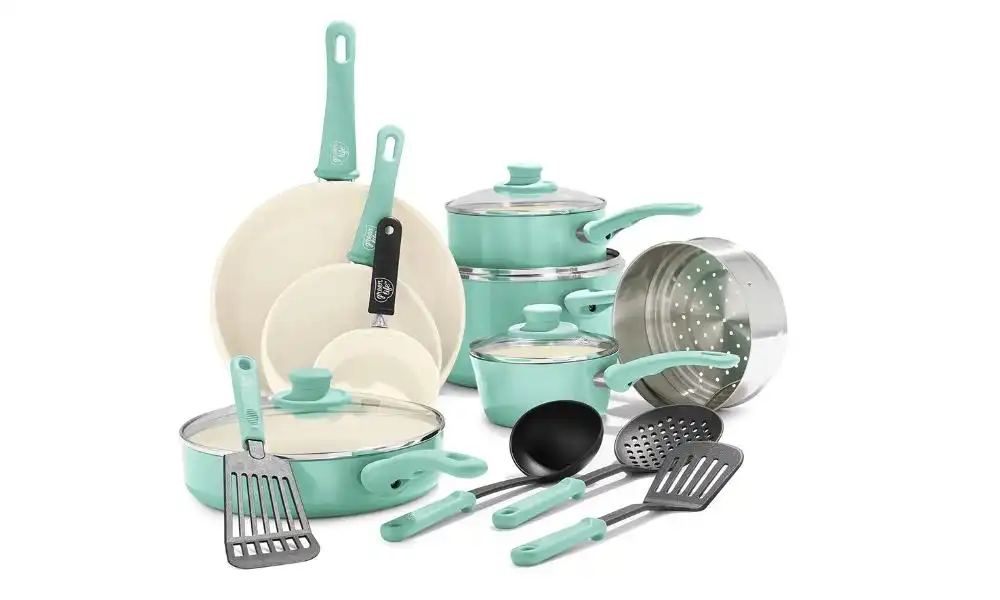
GreenLife Ceramic Nonstick Cookware
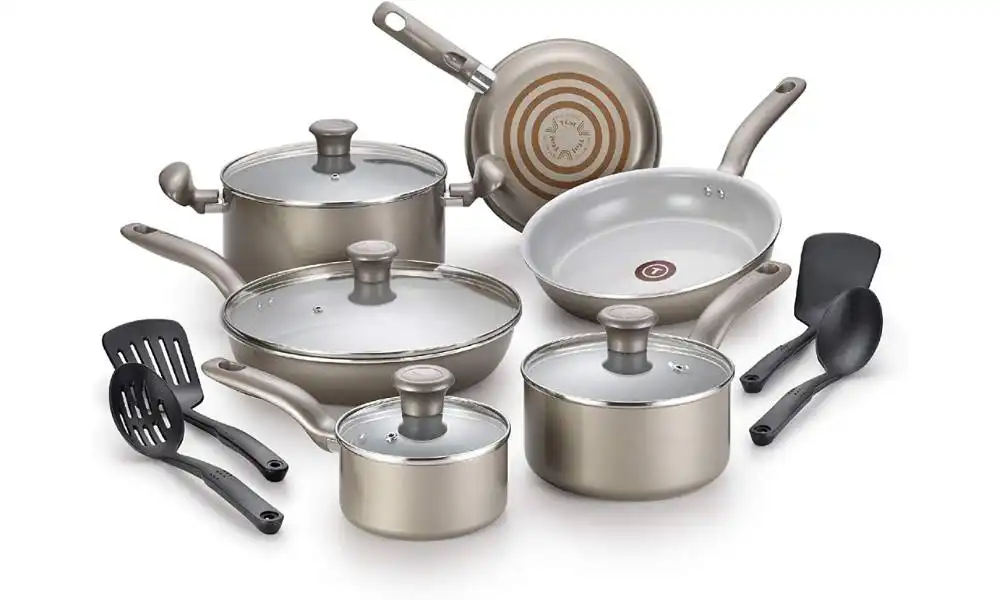
T-fal initiatives ceramic cookware set
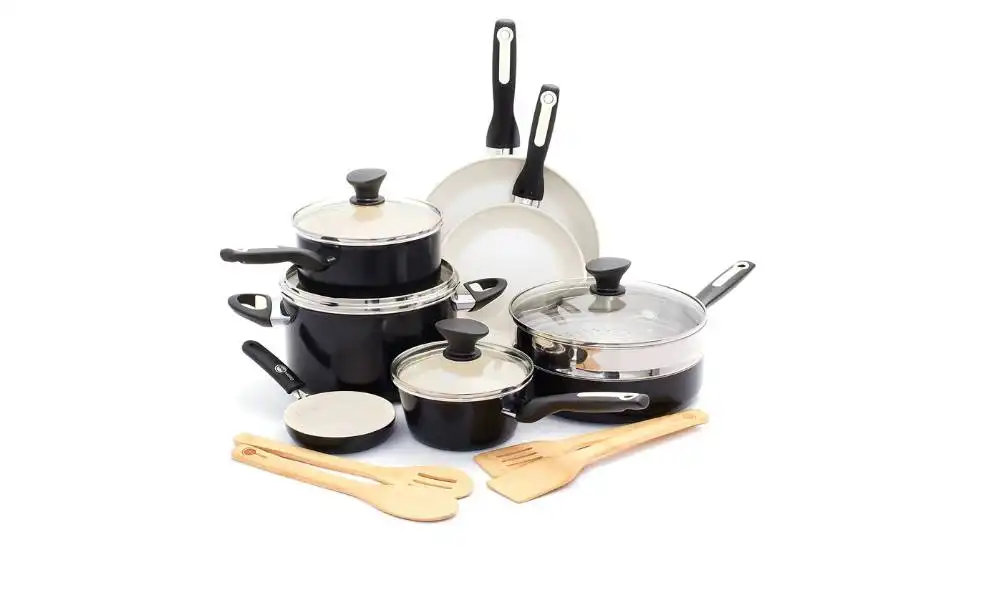
GreenPan Rio Healthy Ceramic Cookware
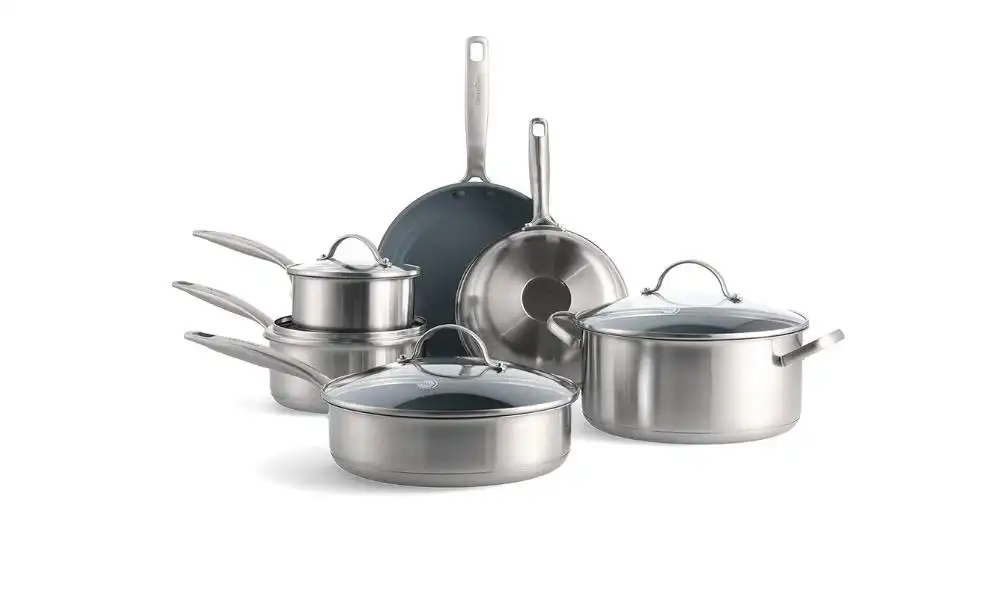
GreenPan Treviso Cookware set

Kenmore Arlington Nonstick Ceramic Cookware

Gotham Steel Cookware Set
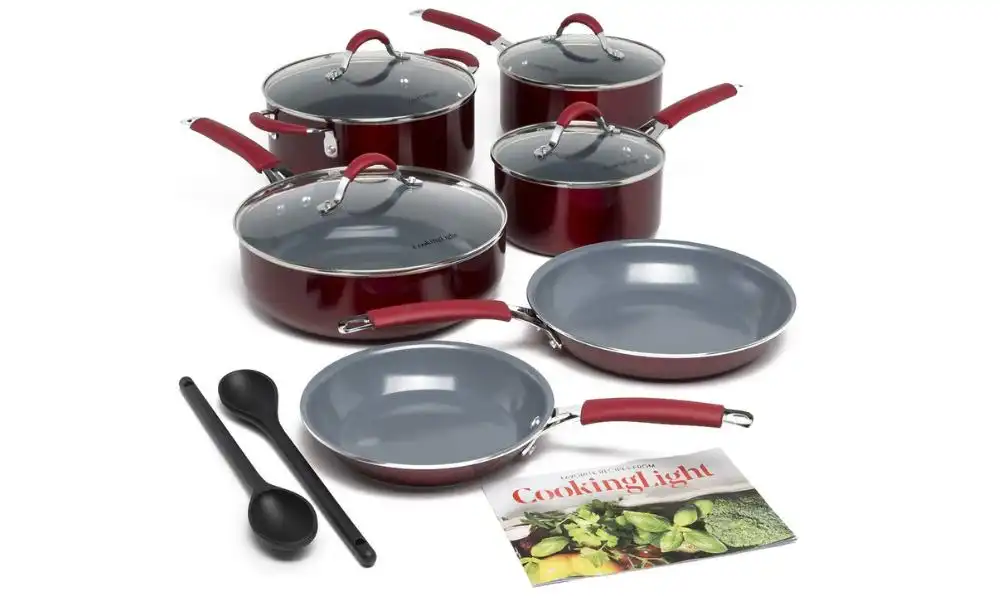
Cooking Light Non-Stick Ceramic Cookware
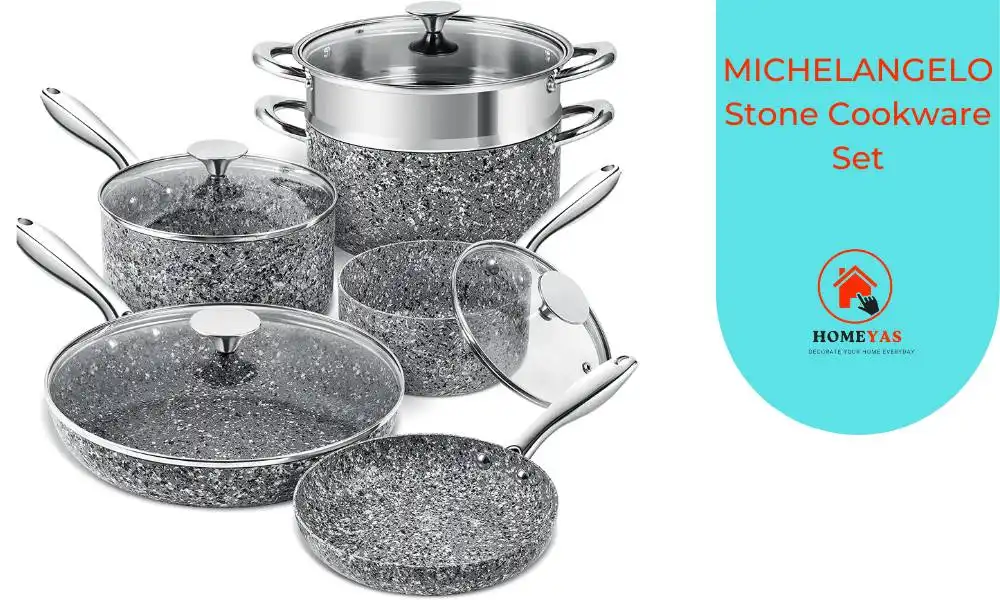
MICHELANGELO Stone Cookware Set
1. GreenLife Ceramic Nonstick Cookware

The GreenLife Ceramic Nonstick Cookware set stands out for its remarkable features and exceptional performance. This set is designed with both sturdiness and flexibility in mind, ensuring that you can rely on it for all your culinary adventures. What sets this cookware apart is its toxin-free Thermolon nonstick coating, which is free of PFAS, PFOA, lead, and cadmium. By choosing GreenLife, you prioritize your health and contribute to a greener environment.
2. T-Fal Initiatives Ceramic Cookware Set
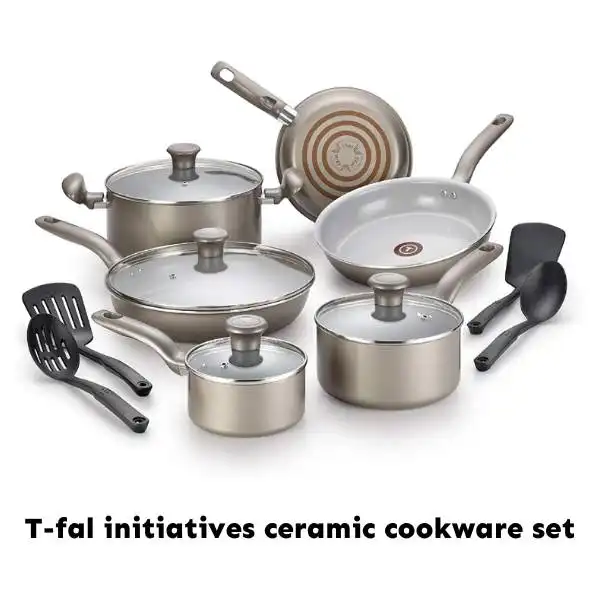
If you’re looking for cookware that promotes healthy cooking, the T-Fal Initiatives Ceramic Cookware set is an excellent choice. Made from ceramic, this cookware set is free from harmful chemicals like PTFE, PFOA, and cadmium. Its exceptional durability and high-temperature resistance make it perfect for searing meats and achieving deliciously crispy results. With the T-fal Initiatives cookware set, you can enjoy cooking your favorite healthy dishes with ease.
3. GreenPan Rio Healthy Ceramic Cookware

For those in search of affordable ceramic cookware that adds a pop of color to the kitchen, the GreenPan Rio collection is worth considering. This 16-piece cookware set offers pots and pans coated with the Thermolon healthy ceramic nonstick coating, which is free of PFAS, PFOA, lead, and cadmium. Unlike many other nonstick coatings, Thermolon will never release toxic fumes, even when overheated. The heavy-gauge construction ensures excellent heat conduction, while the eye-catching Bakelite handles remain cool and comfortable to hold.
4. Calphalon Ceramic Cookware

Calphalon Classic Ceramic Cookware is a great option for those seeking healthier cooking alternatives. The oil-infused ceramic coating eliminates the need for additional oil or butter while providing an excellent nonstick release for easy cleanup. With its durable construction and even heating properties, this cookware set ensures consistent cooking results. The convenient stay-cool stainless steel handles add to the overall comfort and usability of the cookware. Make healthier cooking a breeze with Calphalon Classic Ceramic Cookware.
5. GreenPan Treviso Cookware Set
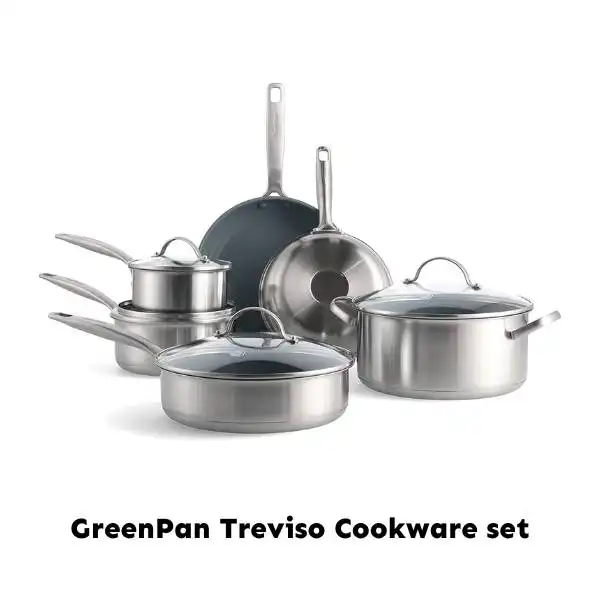
Are you in search of best ceramic cookware that is both top-quality and affordable, making meal preparation a breeze? Look no further than the GreenPan Treviso set. This comprehensive cookware collection has everything you need to kickstart your culinary adventures and is built to withstand the test of time. Crafted with heavy-duty stainless steel, this cookware is designed to handle daily use and resist wear and tear. The tempered glass lids are a convenient feature, allowing you to keep an eye on your food’s progress without sacrificing heat.
Additionally, the entire set is oven safe up to 600°F, enabling you to add a finishing touch to your dishes with a quick blast of heat. And when it’s time for cleanup, rest easy knowing that this set is dishwasher safe, making the process a breeze. But it’s not just durability and convenience that set the GreenPan Treviso apart. This cookware collection is also a healthy choice for you and your family. The ceramic nonstick coating is entirely free from harmful chemicals like PFAS, ensuring that your food remains safe and uncontaminated. Furthermore, the coating is scratch-resistant, enhancing its longevity and maintaining its nonstick properties for longer.
6. Kenmore Arlington Nonstick Ceramic Cookware
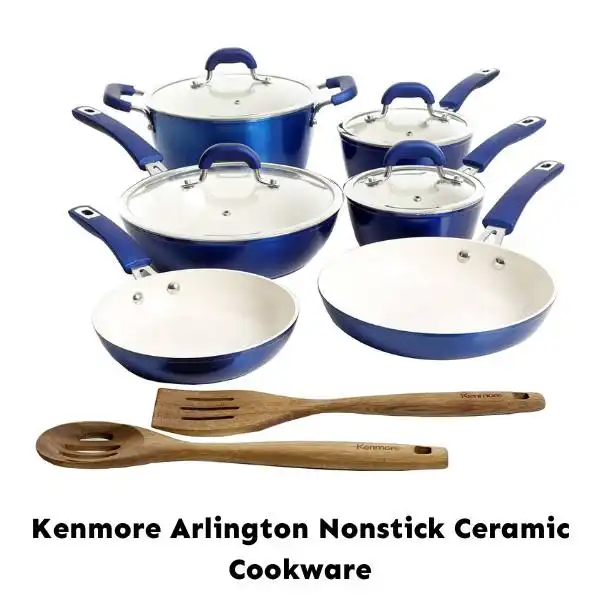
The Kenmore Arlington Nonstick Ceramic Cookware set features a vibrant metallic blue enamel exterior and non-stick interior surfaces, making cleaning a breeze. Not only will it elevate the functionality of your kitchen, but it will also add a delightful pop of color to your culinary space. Crafted from forged aluminum with riveted bakelite handles, this cookware heats up quickly and evenly, ensuring optimal cooking results.
Whether you’re cooking a simple meal for two or entertaining a large group, the Kenmore Arlington Nonstick Ceramic Cookware set has got you covered. Its affordability, performance, and eye-catching design make it a perfect addition to any kitchen.
7. Gotham Steel Cookware Set
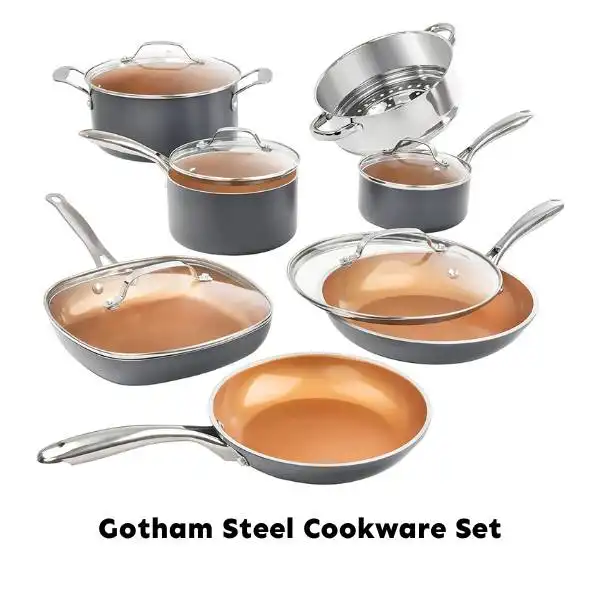
If you’re in search of a versatile and long-lasting cookware set, your quest ends here with the Gotham Steel Cookware Set. This comprehensive 12-piece collection showcases an incredibly durable ultra-nonstick ceramic coating that surpasses the strength of conventional coatings threefold. The set comprises essential pieces such as an 8.5″ skillet, a 10.5″ frying pan accompanied by a tempered glass lid, and a base compatible with induction cooking. Moreover, it boasts a PFOA-free composition and is dishwasher-safe, ensuring effortless and convenient cleaning.
8. Cooking Light Non-Stick Ceramic Cookware
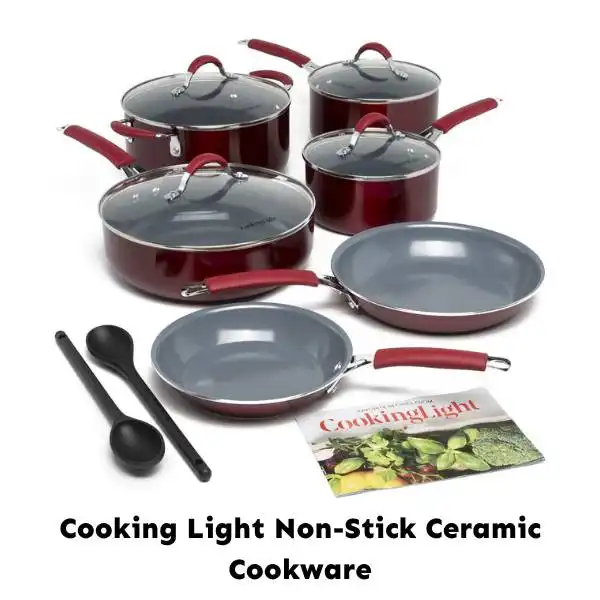
Are you in search of a high-quality cookware set that enables you to prepare healthy and delectable meals effortlessly? Look no further than the Cooking Light Non-Stick Ceramic Cookware Set! This comprehensive 12-piece collection has everything you need to kickstart your culinary journey, complete with a bonus recipe book from Cooking Light. The highlight of this set is its non-stick ceramic coating, which is entirely free from harmful PFOA and PTFE chemicals, ensuring a healthier cooking experience for you and your family.
The tempered glass lids come with vents to prevent overflowing, and the silicone handles offer a comfortable and secure grip. Additionally, the set includes two scratch-resistant nylon spoons, making stirring, basting, and scooping a breeze. With the Cooking Light Non-Stick Ceramic Cookware Set, you’ll effortlessly create mouthwatering meals. Rest assured, your investment is protected with the included limited lifetime warranty.
9. Blue Diamond Cookware set
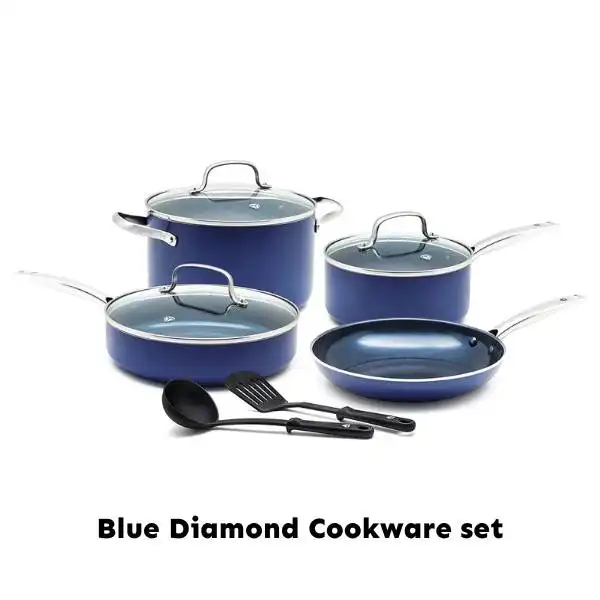
Are you in search of an economical Cheap Ceramic Cookware set that can handle all your cooking needs? Look no further than the Blue Diamond Cookware set! This comprehensive 9-piece collection includes everything you require to whip up culinary delights in your kitchen. Each pan in this set boasts Blue Diamond’s distinctive diamond-infused coating, which sets it apart. This robust coating is 5 times harder and 10 times more durable than traditional nonstick coatings, making it safe for use with metal utensils. Thanks to the incredible heat conductivity of diamonds (which is 4 times greater than that of copper), the Blue Diamond pans heat up rapidly and are effortlessly easy to clean.
Moreover, they are manufactured without any toxins such as PFAS, PFOA, lead, or cadmium. The durable glass lids are oven safe up to 425°F, and the frying pans are equipped with a warp control base that enhances strength and prevents degradation over time. The riveted stainless steel handles provide a secure and sturdy grip. Notably, the Blue Diamond Cookware set is dishwasher safe and can be used in the oven and broiler at temperatures of up to 600°F.
10. MICHELANGELO Stone Cookware Set

Looking to upgrade your kitchen with top-quality cookware? The MICHELANGELO Stone Cookware Set is perfect for everyday cooking. With 10 pieces made from premium aluminum alloy, it ensures quick and even heating. The triple-layer nonstick granite interior is durable and wear-resistant, while the ergonomic long handle provides a comfortable grip. This cookware set works on all stovetops except induction and is oven safe up to 450°F. The 8-inch and 10-inch frying pans feature a nonstick interior and even heat distribution for easy cooking. The tempered glass lid allows you to monitor your food. It’s also dishwasher safe, though hand washing is recommended. Upgrade your kitchen with style and functionality by choosing the MICHELANGELO Stone Cookware Set. Enjoy reliable performance and easy maintenance.
Conclusion
Ceramic cookware offers numerous advantages, making it a popular choice among home cooks and professional chefs alike. Its non-toxic nature, even heat distribution, versatility, and ease of cleaning make it an excellent option for healthy and enjoyable cooking experiences. While it does require gentle handling and may take slightly longer to heat, the benefits of ceramic cookware outweigh any minor drawbacks. By following proper care and usage techniques, ceramic cookware can be a valuable addition to your kitchen arsenal.
FAQs (Frequently Asked Questions)
Is ceramic cookware safe to use?
Yes, ceramic cookware is safe to use. It is made from natural materials and doesn’t contain harmful chemicals like PFOA and PTFE.
Can I use ceramic cookware in the oven?
Yes, ceramic cookware is oven-safe. However, always check the manufacturer’s instructions for specific temperature limitations.
Can I use metal utensils with ceramic cookware?
It is best to avoid metal utensils to prevent scratching the ceramic surface. Opt for wooden, silicone, or nylon utensils instead.
How do I clean ceramic cookware?
Handwashing with warm water, mild dish soap, and a soft sponge or cloth is recommended. Avoid abrasive cleaners or scouring pads that can damage the surface.
Can I use ceramic cookware on an induction cooktop?
Some ceramic cookware is compatible with induction cooktops. Look for cookware specifically labeled as induction-compatible.
